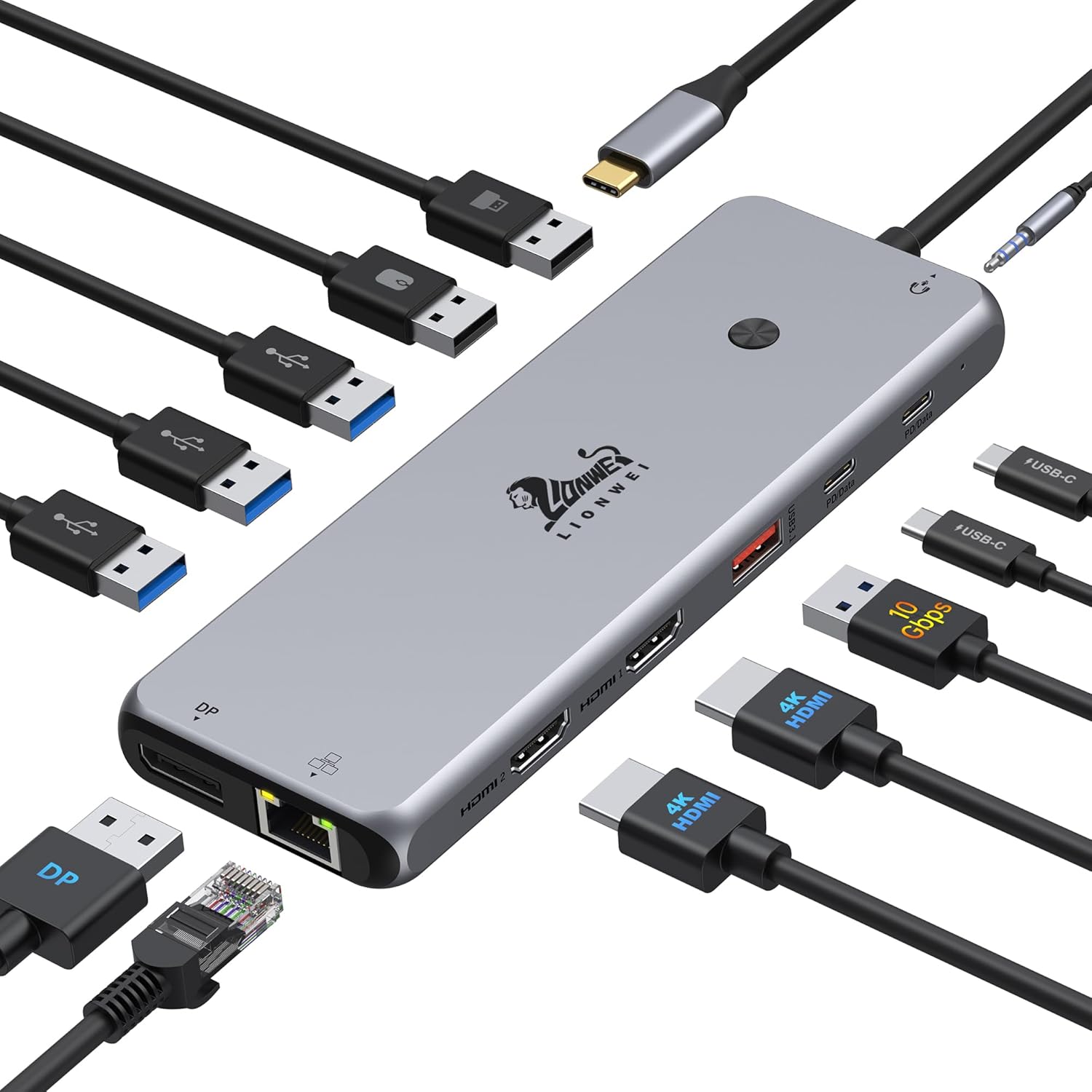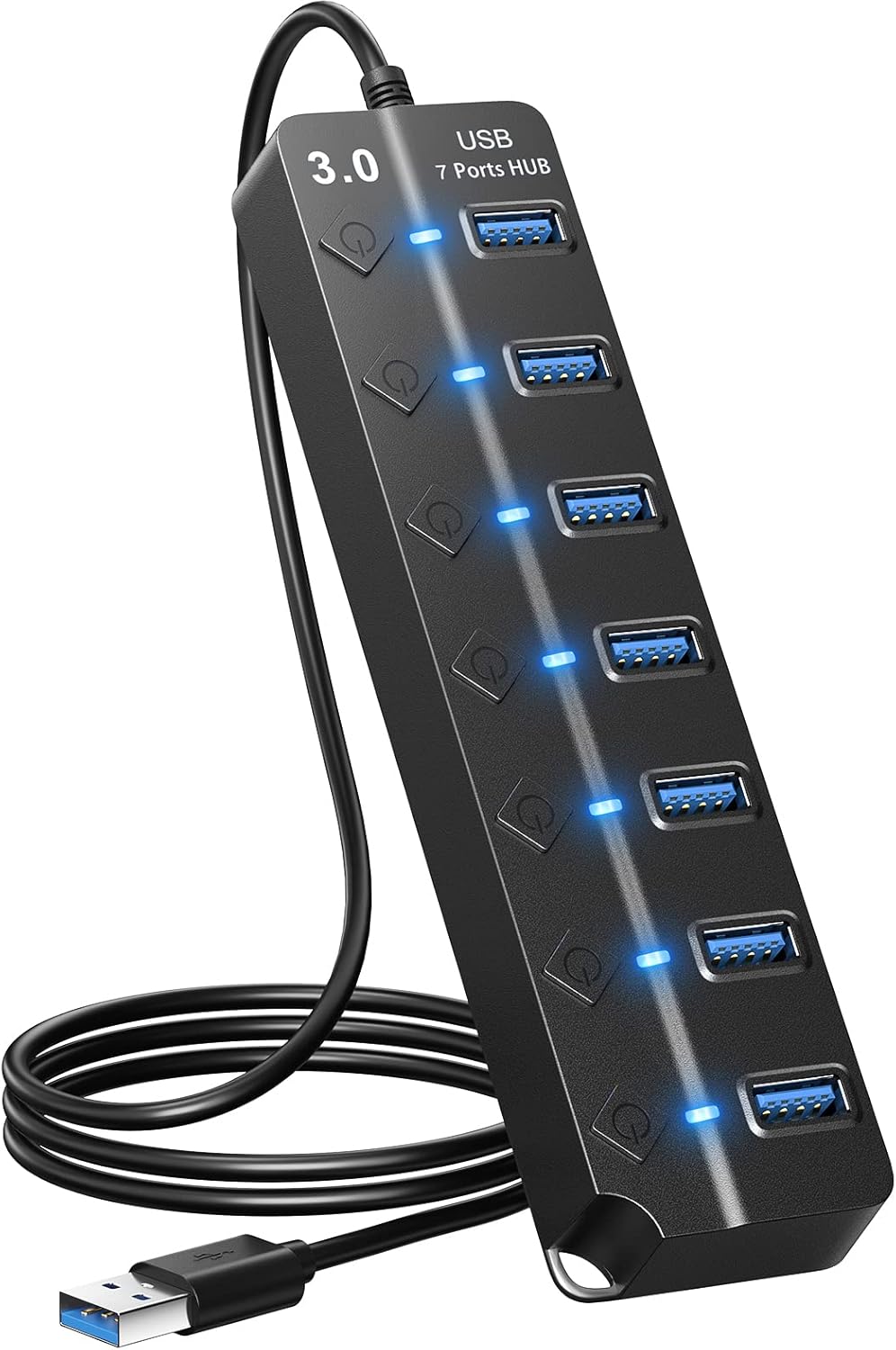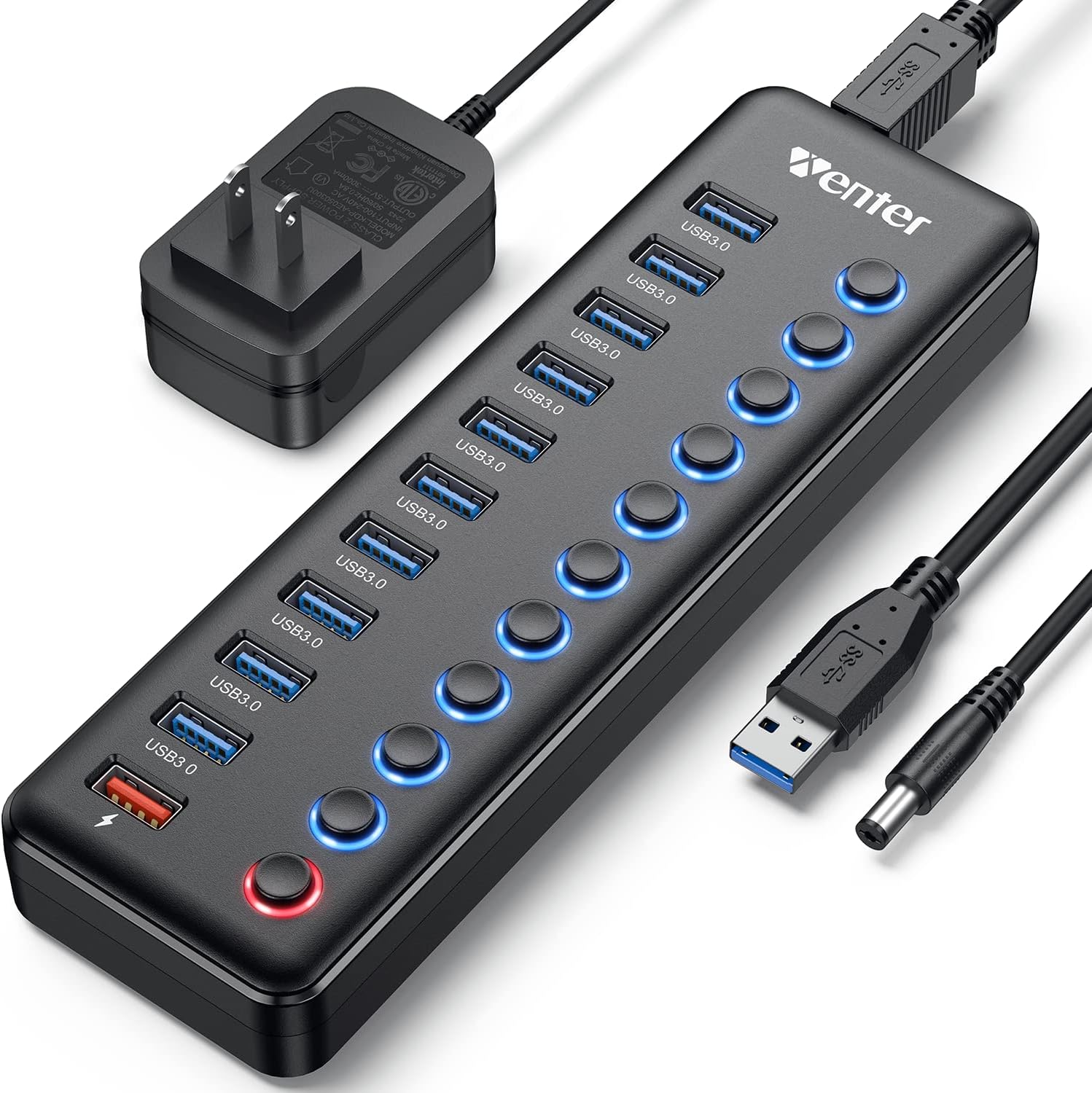Here’s an overview of the Best Usb Hub that we’ll explore today:
Top Pick
13 in 1 USB C Docking Station – Dual Monitor |
||
Best Quality
UGREEN USB 3.0 Hub |
||
USB Hub 3.0 |
||
Powered USB Hub |
||
USB 3.0 Hub |
USB hubs are a practical necessity in modern laptop, desktop, and gaming setups where one port becomes a bottleneck for peripherals, external storage, displays, and charging. The category spans compact 4-port adapters to feature-rich docking stations that expand video outputs, Ethernet, audio, and multiple high-speed data channels. For this comparison, I evaluated five hubs across price, port diversity, data throughput, charging capability, and ease of use. My testing method combined real-world tasks (file transfers, peripheral stitching, display output with and without MST/SST, and charging behavior) with objective measurements (USB 3.0/3.1 data rates, HDMI/DisplayPort 4K output where supported, and power delivery performance). The lineup includes budget-friendly 4-port expanders, midrange powered hubs, and a premium USB-C docking station to illustrate how value, performance, and features scale in 2025.
1. 13 in 1 USB C Docking Station – Dual Monitor
- Brand: LIONWEI
- Manufacturer: LIONWEI
The LIONWEI 13-in-1 docking station is positioned as a premium, all-in-one solution for multi-monitor Mac/Windows setups. It bundles dual HDMI outputs, a DisplayPort, and a trio of USB-C/USB-A ports along with multiple USB 3.0/2.0 connectors, Ethernet, and audio. It supports 100W Power Delivery on the USB-C PD ports, and advertises 10Gbps data transfer, with a total footprint suitable for desks that need to minimize adapter clutter. The combination of two 4K HDMI outputs and SST/MST support (Windows) provides flexible display arrangements, including clone and extended modes. The device emphasizes plug-and-play use with Windows MST/SST support, while macOS users should note limitations in extend mode to extending only one 4K monitor at 60 Hz.
From a performance standpoint, this dock leverages USB-C 3.1 with 10Gbps data paths and PD charging up to 100W, which is adequate for most ultrabooks while leaving some headroom for high-power laptops under heavy graphics load. However, the 13W consumption by the dock itself reduces available laptop charging to about 87W, which is a consideration for power-hungry workloads or charging while gaming. The Ethernet port supports typical gigabit speeds, and the 3.5mm audio jack enables simple headset setups. For users who require robust dual-monitor productivity on Windows with MST-enabled setups, this dock shines, whereas macOS users should plan for single-4K-60Hz extend or mirror configurations.
Pros
- 13-in-1 port expansion with dual 4K HDMI and DisplayPort
- 100W PD charging capability on USB-C while using data paths
- Multiple USB ports including USB-C and USB 3.0/2.0 for peripherals
- Gigabit Ethernet and 3.5mm audio/Mic
- 18-month warranty with customer support
Cons
- Extend mode on macOS limited to a single 4K monitor
- Dock consumes 13W itself, reducing total laptop charging headroom
- Some users may find the port layout crowded on small desks
2. UGREEN USB 3.0 Hub
- Brand: UGREEN
- Manufacturer: UGREEN
UGREEN’s 4-port USB 3.0 hub emphasizes compact travel-friendly expansion with plug-and-play simplicity. It converts a single USB-A port into four additional USB-A ports, supporting mainstream peripherals like keyboards, mice, flash drives, and printers. Its 5Gbps ceiling makes it a strong performer for everyday tasks and moderate file transfers, and its slim footprint (0.4 inches thick, ~33g) is ideal for laptops and gaming consoles on the go. The hub is widely compatible across Windows, macOS, Linux, and Chrome OS, and is designed without requiring drivers.
In practice, this hub excels as a primary extension for productivity or light gaming setups where multiple peripherals must share a single upstream port. It does not offer charging capability, so it’s not suitable for powering devices that draw significant current through the hub. The data path remains straightforward USB 3.0 with a 5Gbps payload, which is ample for most non-4K video workflows and peripheral transfers. Its ultra-compact build makes cable management easier, though you should avoid daisy-chaining power-hungry devices through this hub to prevent power constraints on the host port.
Pros
- Ultra-slim, highly portable design
- Quad-port USB-A expansion with 5Gbps transfer speed
- Plug-and-play across major OS families
- No driver requirement
- Lightweight and affordable
Cons
- No external power option; limited to bus-powered scenarios
- No USB-C or charging port
- Not ideal for high-power peripherals
3. USB Hub 3.0
- Brand: Onfinio
- Manufacturer: Onfinio
Onfinio’s 7-port USB 3.0 hub adds substantial port-density with individual on/off switches and status LEDs, facilitating organized peripheral management. The 5Gbps spec aligns with modern USB 3.0 expectations, and the 1-meter cable helps with flexible desk layouts. The inclusion of separate power-switched ports is a meaningful feature for reducing standby power draw and managing device-specific charging needs when powered through a single upstream USB port. It’s compatible with a wide range of devices, including consoles like PS4 and Xbox, as well as external storage and input devices.
Performance-wise, the seven-port spread means shared bandwidth, so use cases that saturate multiple USB 3.0 devices simultaneously could experience contention. The need for an external power supply is advised for power-hungry devices, particularly when using many devices at once. The build feels sturdy for a portable hub, though the weight and length may affect desk ergonomics. The device is well-suited for multi-peripheral setups on laptops or desktops that require many USB connections without investing in a docking station.
Pros
- High port count (7 ports) for peripherals
- Individual on/off switches with LED indicators
- 5Gbps USB 3.0 speeds across ports
- Wide compatibility with PCs, Macs, and consoles
- Plug-and-play with no driver requirements
Cons
- Requires external power for high-demand devices
- Shared bandwidth across 7 ports can limit peak transfers
- No video or Ethernet ports
4. Powered USB Hub
- Brand: WENTER
- Manufacturer: WENTER
Wenter’s 11-port powered hub blends 10 USB 3.0 data ports with a dedicated smart charging port. The inclusion of a 12V/3A power adapter enables higher current delivery per port (up to 2.4A), which is beneficial for charging tablets and phones while connected to the hub. The hub also features individual on/off switches and LEDs for quick status checks, along with a 100cm upstream cable and a 120cm power cable that offer flexible integration into larger desks.
In use, this is a strong choice for a desktop environment where high peripheral density and charging needs coexist. The dedicated charging port helps keep devices topped up without starving data ports, and the 5Gbps ceiling ensures fast data transfers across multiple devices. The trade-off is size and weight (roughly 14.8 oz) and the need for a wall outlet, which reduces portability but increases capability for sustained, high-demand workloads.
Pros
- High port count with 10 data ports and 1 smart charging port
- Dedicated 12V/3A power supply enables higher per-port charging
- Individual on/off switches with LEDs
- Long cables provide flexible desk placement
- Good for dense peripheral setups and charging needs
Cons
- Requires separate power adapter and outlet
- Size and weight reduce portability
- May be overkill for simple setups
5. USB 3.0 Hub
- Brand: vienon
- Manufacturer: vienon
VIENON’s 4-port USB 3.0 hub targets budget-conscious buyers seeking reliable, compact expansion. It supports simultaneous operation of all four ports, with a 5Gbps data path typical of USB 3.0. The form factor is ultra-compact (3.94 x 1.18 x 0.39 inches) at roughly 1.5 ounces, making it ideal for travel or as a secondary hub for gaming consoles and laptops. It emphasizes plug-and-play simplicity with LED indicators for status awareness without driver requirements.
In everyday usage, this hub performs well for non-typing-intensive tasks like keyboards, mice, flash drives, and basic peripherals. It does not support charging, so it is unsuitable for power-hungry devices or devices that require bus-powered power delivery. The footprint is small enough to tuck into tight spaces, but users should be mindful of power needs and avoid high-draw devices on all four ports simultaneously.
Pros
- Budget-friendly at $5.88
- Compact, travel-friendly form factor
- USB 3.0 with 5Gbps data rate
- Plug-and-play with LEDs for status
- Lightweight and easy to deploy
Cons
- Not for charging devices
- Only 4 ports with no upstream video or Ethernet
- Bus-powered design may limit performance with certain devices
Frequently Asked Questions
We’ve compiled answers to the most common questions about usb hubs to help you make an informed decision.
Conclusion
.
.
Final thoughts here.




